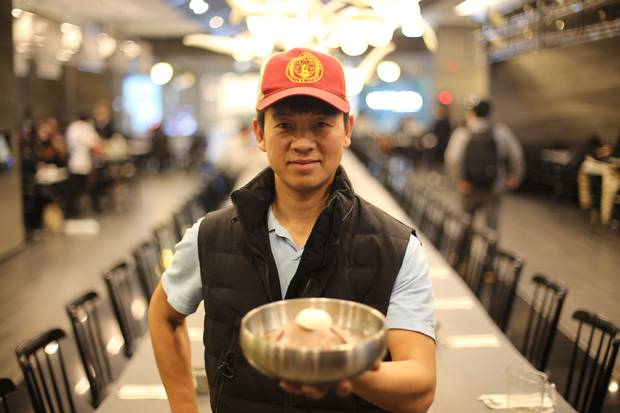North Korea has spent the last few years aggressively testing weapons of mass destruction, trying to perfect a hydrogen bomb that can be fitted to a long-range missile and elevating tensions on the Korean Peninsula to some of their highest levels in modern history.
But in South Korea, discerning diners have spent those same years trying to achieve something else: the perfect North Korean cold noodle experience.
Young South Koreans have little interest in the quest for reunification that consumed their parents and grandparents. But they have nonetheless developed an acute interest in one of North Korea's most famous foods, Pyongyang naengmyeon.
Think of naengmyeon, says South Korean chef Jungsik Yim, as "North Korea's hamburger."
The dish incorporates buckwheat noodles in a lightly salted beef broth that is chilled to just above freezing. It's typically served with boiled-beef slices and topped with half a boiled egg, rounded side up.
Mr. Yim, whose two Michelin-starred restaurants have made him among Seoul's most famous restaurateurs, tasted it for the first time three years ago.
It wasn't love at first sip. The muted flavours have been compared to dishwater; most people come away from their maiden sampling with sour looks. "I said I hate naengmyeon! It tastes so weak!"
But he soon became smitten with the delicate taste and the dish's irresistible undercurrent of umami. He's not alone. "Everyone I know is crazy about Pyongyang noodles," he said.
"I feel like there's a generational shift in tastes," he added. "Our generation is looking for healthier food. And North Korean food is really popular. It's become a trend."
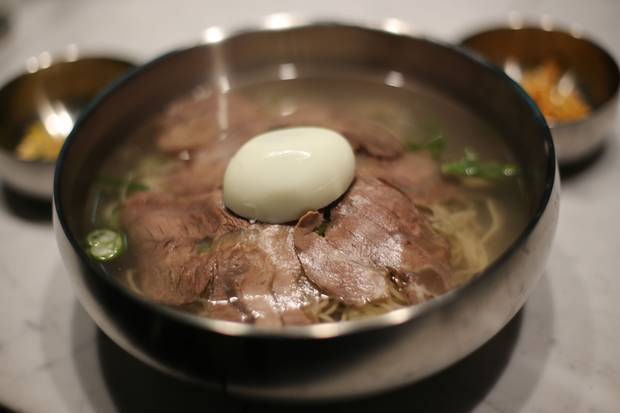
Pyongyang naengmyeon is served at Mr. Yim’s Seoul restaurant House of Peace. The cold dish is made from buckwheat noodles and boiled beef, typically served with a boiled egg on top.
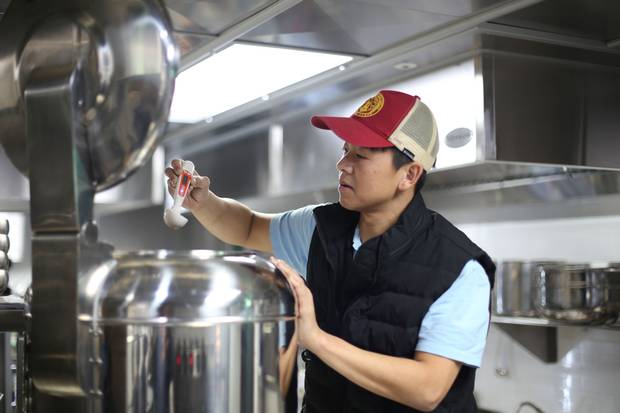
Mr. Yim checks the temperature of his Pyongyang naengmyeon, which is chilled to just above freezing.
South Korea's most influential TV food show, Wednesday Food Talk, has covered Pyongyang naengmyeon several times; its lead producer has called the dish one of the show's most popular. The Michelin Bib Gourmand guide includes six naengmyeon shops among its 48 recommended restaurants in Seoul. Koreat, one of the country's top restaurant-ranking services, writes that in Seoul today, "If you don't understand Pyongyang naengmyeon, you're not a true foodie."
Those who fall for the dish revel in its subtlety and rave over its rustic rejection of fiery heat and fusion flavours. Some believe its lack of culinary adornment is a product of North Korean poverty; scholars say it's merely a difference in regional cuisine unrelated to economic factors.
"It is the beauty of simplicity," said Andy Kim, 52, an IT manager at a bank in Seoul who has become a naengmyeon otaku. "By subtracting all the seasoning and spices prevalent in typical Korean food, you are left with just the buckwheat and broth to drive the flavour. The taste is addictive."
Nostalgia, not politics, lies behind the new interest, says Kim Jee-in, 39, the CEO of a computer-game development company who in early 2017 founded a Facebook page for lovers of a dish he calls "profound and mysterious."
"Young people seem to eat Pyongyang naengmyeon because they remember the history of the dish, and they value things that have disappeared over the years," he said.
His own quest for the perfect cold buckwheat noodle bowl has taken him to, by his count, 100 restaurants. He's scoured what YouTube videos he could find from North Korea, too, as a benchmark.
In North Korea, Pyongyang naengmyeon is a ubiquitous staple, served in both small-town noodle shops and places like Okryu-gwan, a 2,000-seat state-owned restaurant in Pyongyang that has "defined the culinary life" of that city, Andrei Lankov, a scholar who has lived there, writes in North of the DMZ: Essays on Daily Life in North Korea. He describes people queuing for hours for entry tickets to sample its cold noodles, a "quintessentially North Korean dish."
For those who knew where to look, Pyongyang naengmyeon has long been available in Seoul, too, served at restaurants with aging owners and equally old patrons – a taste of home for northerners who found themselves locked in the south after the country's division.
"When we opened in 1985, there weren't any young people. They didn't know about naengmyeon – they didn't come," says Lee Yun-sang, 92, the original proprietor of Eulji Myeonok, a small restaurant hidden off a main street in Seoul's Jung district.
"But recently there have been more young people than old," he said.
Lee Yun-sang grew up in what is now North Korea, moving south in late 1945 to find work. Now he watches people a quarter his age snap pictures with their phone of a dish he grew up eating. "Then they go share their photos and their friends come here. The customers advertise for us," he says with a smile.
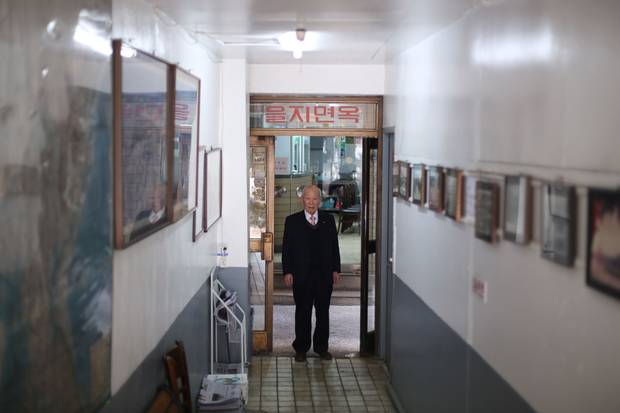
Lee Yun-sang, the 92-year-old original proprietor of Eulji Myeonok restaurant in Seoul, has served Pyongyang naengmyeon since 1985.
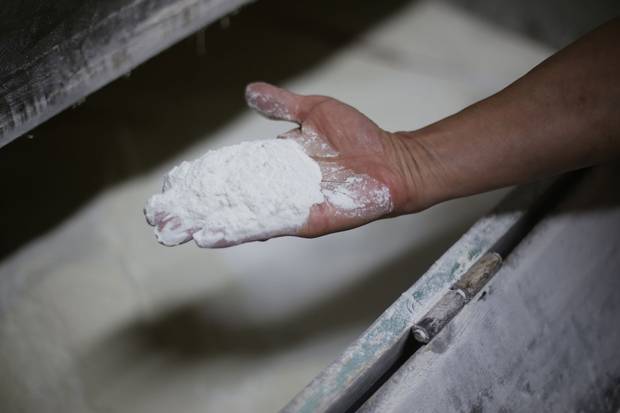
To mill the flour for its noodles, Eulji Myeonok uses imported buckwheat from China. Fresh grains make for the best noodles, but getting consistent quality throughout the year involves carefully mixing old and new grains.
The menu at Eulji Myeonok is unchanged from opening day 33 years ago: a few different kinds of buckwheat noodles and several dishes featuring the boiled beef used to make broth for the naengmyeon.
The equipment out back is the same, too, a tall stainless-steel stone flour mill with exposed belts standing next to bags of buckwheat imported from China.
Even among those with decades of experience, buckwheat is tough. The angular grains are green when they are first harvested late in the year, but gradually fade to a tan colour. As they age, they grow more brittle and powdery.
The freshest grains make for the best noodles; achieving consistency throughout the year requires mixing old with new.
Lee Seong-min, the 58-year-old son of Lee Yun-sang, describes the process the way a master distiller might talk about making whisky.
"Even with a tiny mistake in any one of those steps, you won't get a good result. It will be tasteless," he says.
That's why at his restaurant, the only people allowed to make the noodles are him, his brother and his sister-in-law. In summer, he starts making flour at dawn, enough for 1,000 bowls a day.
The dish can, however, confound newcomers. Earlier this month, Mr. Yim added it to House of Peace, his new restaurant. The results haven't made him happy, or his customers.
"They're all saying the same thing: They like the broth. But they don't like the noodles," he says.
"I have lost a lot of my confidence."
But he wants to get it right. He sees naengmyeon as the perfect diplomatic accoutrement, and talks seriously about opening a restaurant near the United Nations in New York. He has visions of negotiators conducting nuclear talks over cold noodles.
At Eulji Myeonok, Lee Seong-min is just happy sales are up.
He's not worried it's a trend that will soon vanish. For reasons no one can quite discern – maybe it's the umami, maybe the soupçon of salt, maybe the refreshing shiver of the broth – Pyongyang naengmyeon takes hold of those who gain a taste for it.
"It's just like cigarettes," says Lee Seong-min. "Once you try it, you keep thinking about it."

With reporting by Cynthia Yoo
THE GLOBE IN KOREA: MORE FROM NATHAN VANDERKLIPPE
